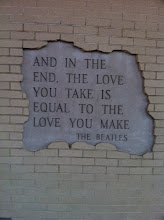Our Lady of Czestochowa

The celebration of Easter is preceded by Holy Week, which begins with Palm Sunday. Palm branches and twigs commemorate Christ's triumphant entry into Jerusalem. After the festivities, palm leaves were used for magic rites, such as conjuring up storms and consecrating women at childbirth and sick domestic animals. The original palm branch is replaced by a willow or raspberry branch, and is decorated with ribbons, flowers and leaves. It is believed that swallowing a willow catkin from a branch consecrated by a priest would bring health, and a palm branch placed behind a holy image until the following year would bring the inhabitants luck. The church bells that had resounded from Palm Sunday onwards fell silent on Holy Thursday. Rattles and clappers took their place. Fires were lit at crossroads so that wayfarers and poor people could warm themselves. Meals were also placed at these spots so that they could nourish themselves ~ and together with them the good spirits of the house. On the morning of Holy Thursday, the vestments are changed on the miraculous icon in the chapel of the Pauline monastery at Jasna Gora in Czestochowa. This is one of the most important sites of the religious Poles, and has been venerated as a national shrine since the 14th century.

Pisanki (elaborately designed Easter eggs) are made during Holy Week. The baking of breads and pastries is an art among Polish housekeepers and special confections, such as the famous Babka, are prepared for Easter, as are lamb-shaped cakes and lambs molded from butter. Along with various cured meats, sausage and ham, these items are arranged in a large basket and taken to church on Holy Saturday for a special blessing. These blessed foods constitute the basis of the Polish Swieconka or Easter Meal.
On Sunday morning, the table is set with the best linens, china and finery. Featured foods include colored eggs, cold meats, coils of sausages, ham, yeast cakes, pound cakes, poppyseed cakes, other pastries and in the middle of it all, a lamb-molded cake or a lamb made of sugar or butter. This symbol commemorates the resurrected Christ. In olden times, no cooking was permitted on Easter Sunday, so the Poles evolved the tradition of not serving warm meals on that day. Among the favorite foods is cwikla (grated horseradish and red beets), home-made pickles, marinated mushrooms and other delicacies. Sharing a blessed boiled egg with one's relatives continue the following day, on Easter Monday. On this day, many Poles and Polish-Americans celebrate a very ancient Slavic spring tradition called Smingus-Dyngus or the custom of sprinkling or pouring water on one another.
Swieconka is the traditional blessing of the food to be eaten on Easter Sunday. While the tradition varies from region to region and village to village, it is a tradition dear to the heart of every Pole. Today, this blessing takes place in church on Holy Saturday. All the items are placed in a wicker basket that is sometimes lined with an ornamental cloth or traditional folk fabric. The filled basket is then covered with a linen cloth which should be white, but can have a colored crocheted or embroidered design. The basket is decorated with sprigs of boxwood (bukszpan), the typical Polish Easter evergreen. Polish Palms which are created from dried flowers, can also be used for decoration.
Polish Easter Foods that are most commonly placed in the Easter Basket for the traditional blessing and their symbolism have been provided by The Polish Falcons of America.
Bacon (Boczek/Slonina) Symbol of the overabundance of God's mercy on us.
Bread (Chleb) Home baked bread, the staff of life.
Easter Bread (Babka) A special round loaf, made of rich dough and raisins, and decorated with a cross, reminds us of Jesus, the Risen Lord, who, in the Eucharist, is the food of our earthly journey and the true bread of everlasting life.
Butter (Maslo) The butter should be shaped into the figure of a lamb or cross. Dairy products are included to celebrate the end of Lent and the richness of Salvation which flows from the Death and Resurrection of Jesus.

Candle (Swieca) The only non-edible item in the basket, the candle symbolize Jesus, the Life and Light of the World. The candle can be lit during the blessing.
Cheese (Ser) A symbol to remind Christians of moderation.
Colored Eggs (Pisanki) Both colored and uncolored eggs, indicate hope, new life and Resurrection. Because of their special meaning, it is fitting that the eggs to be blessed are decorated with symbols of Easter.
Ham (Szynka) This popular main dish is symbolic of great joy and abundance.
Horseradish (Chrzan) This represents the bitter herbs prescribed in the original Passover meal as a reminder of the bitterness and harshness of the life of slavery in Egypt. It also reminds us of the bitterness of the Passion of Jesus, by which he entered glory. Horseradish is often prepared with red beets.
Salt (Sol) Symbolizes wisdom and preservation from corruption, it is included to remind us that Jesus did not undergo corruption in the grave.
Sausage (Kielbasa) This is an old Slavic tradition. Its links remind us of the chains of death that were broken when Jesus rose from the dead as well as God's favor and generosity.










